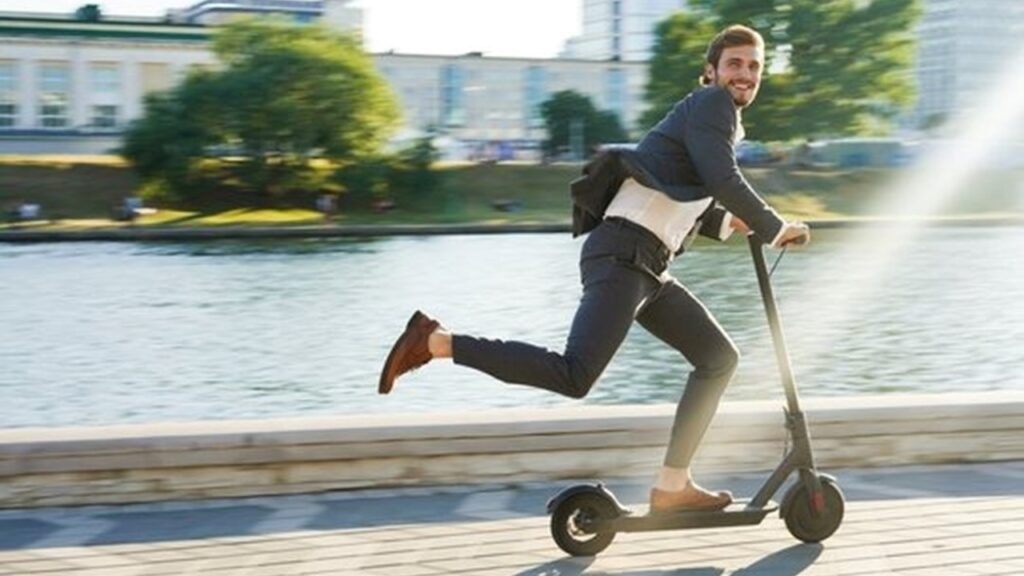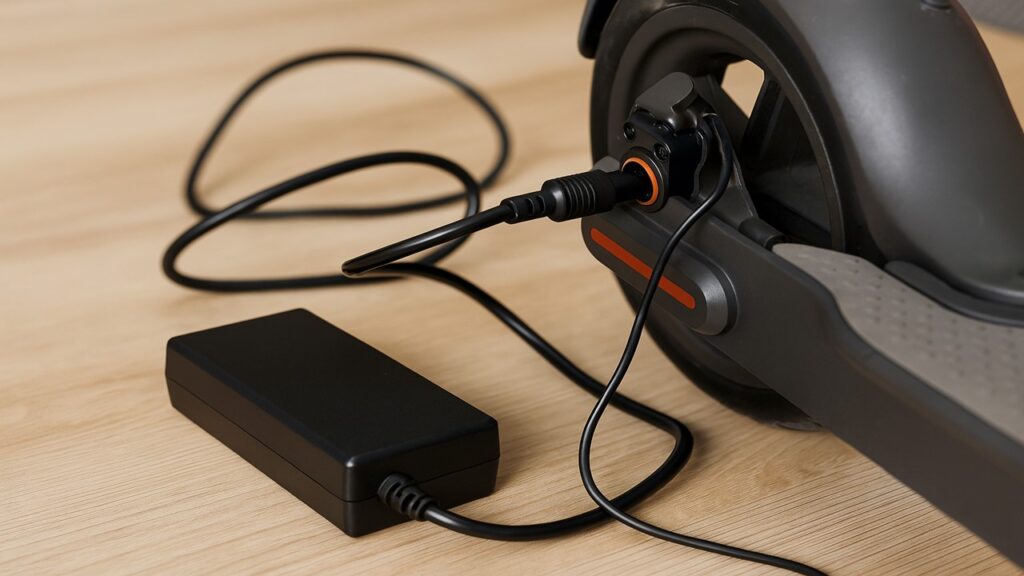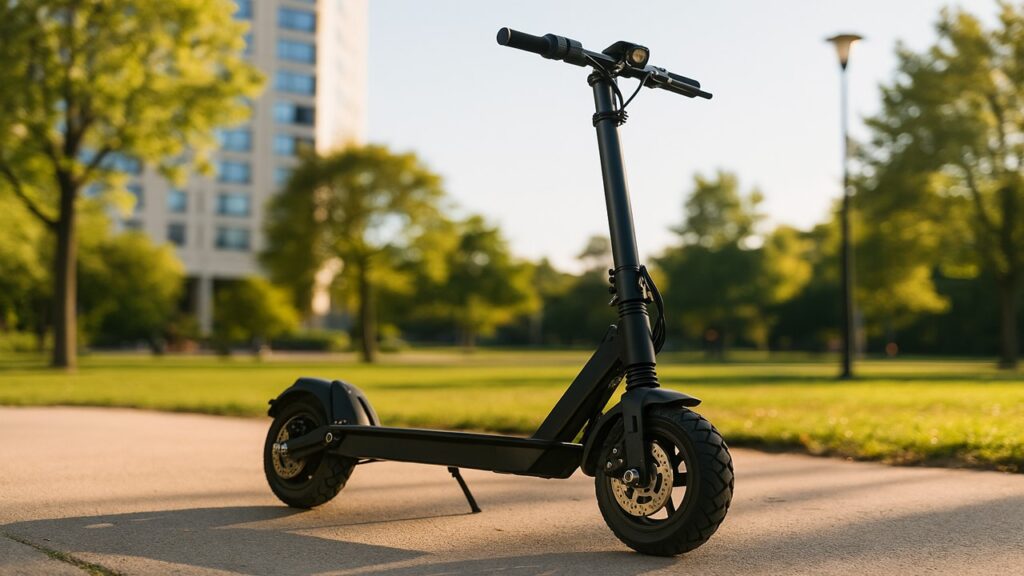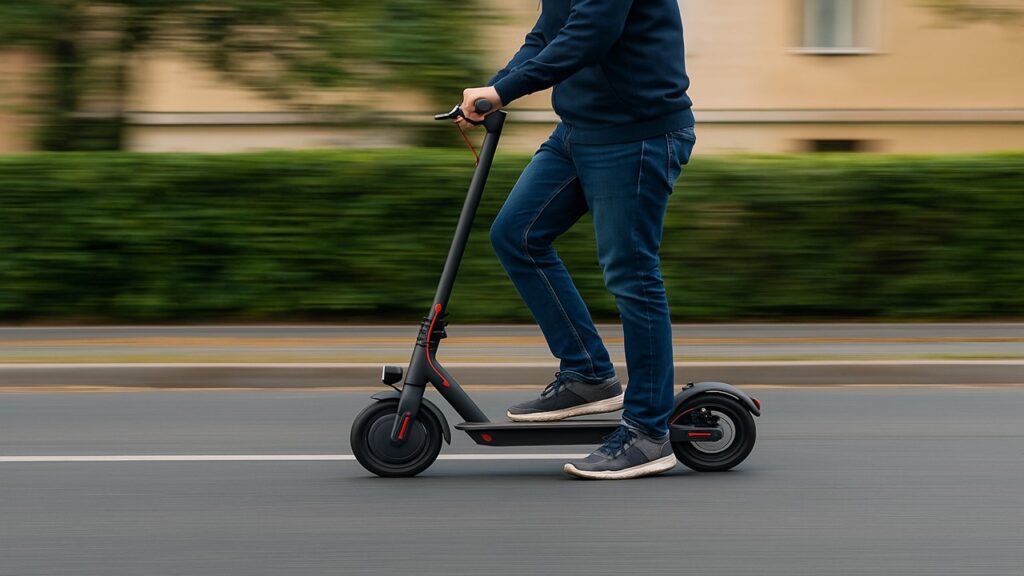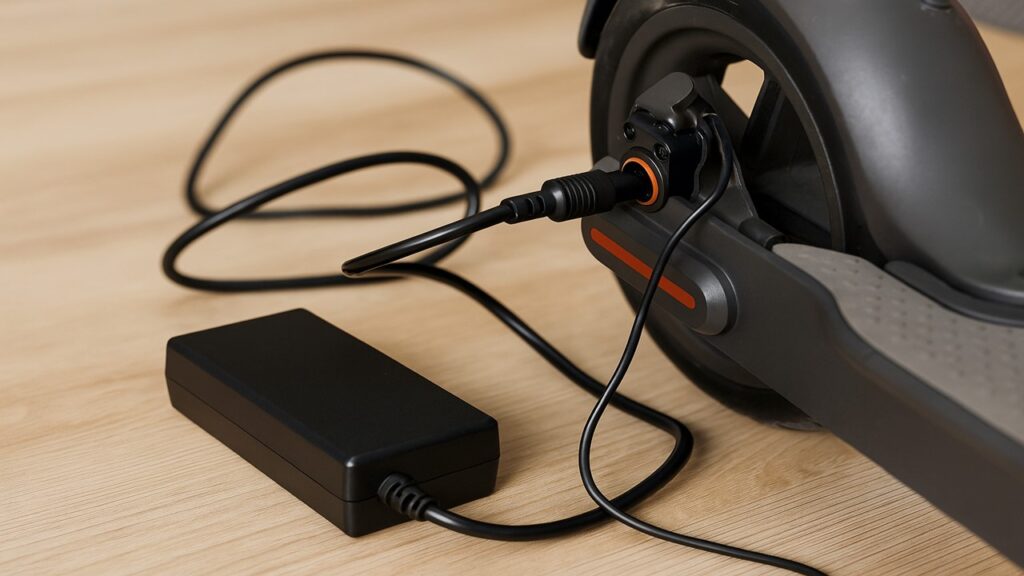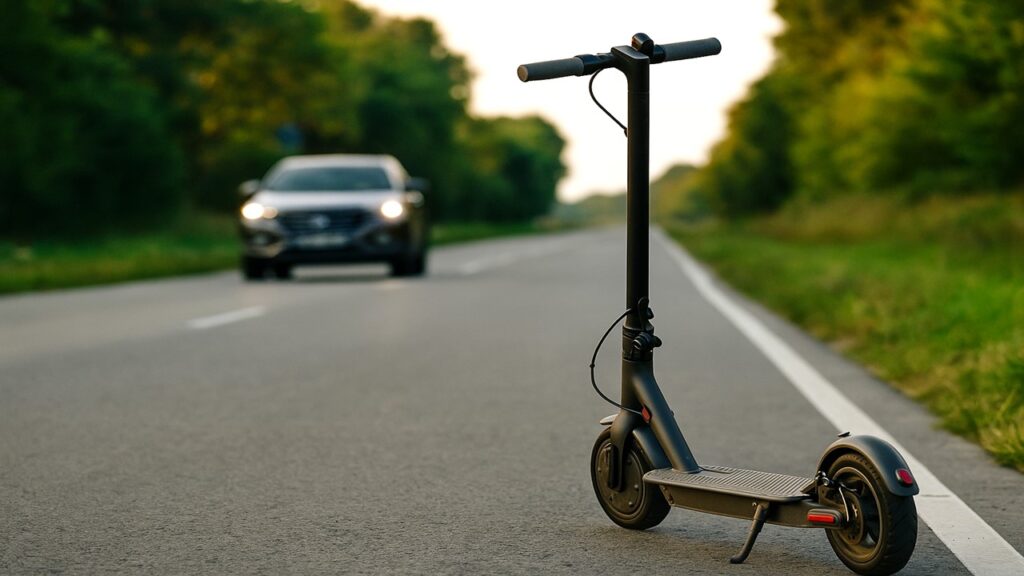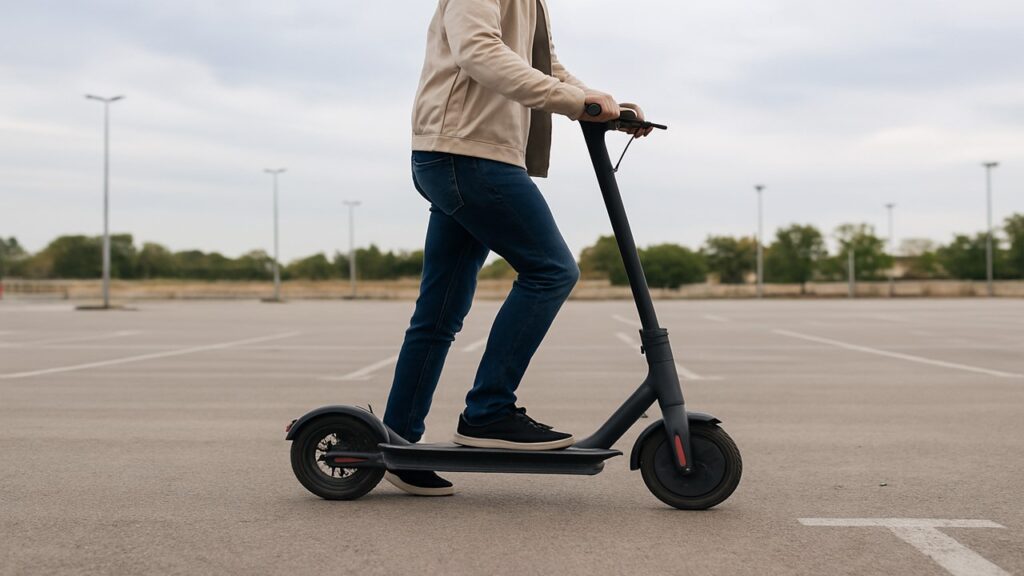
If you’re new to electric scooters, the first question is simple: how do you actually ride one? This guide explains everything step by step—from powering it on to staying safe on the road—so you can ride with confidence.
Key Summary
- Electric scooters provide a simple and eco-friendly way to travel short to medium distances.
- Safe riding starts with preparation—always wear protective gear and check the scooter before use.
- Beginners learn best by following step-by-step instructions and practicing balance, braking, and turning.
- Regular maintenance and awareness of local riding rules keep your scooter reliable and your rides safe.
How to Use an Electric Scooter Step by Step
Learning to ride an e-scooter is straightforward once you break it down into simple steps. Think of it as balancing, controlling speed, and stopping safely.
Quick Steps:
- Power on the scooter and check the battery.
- Place one foot on the deck and push off gently.
- Use the throttle to accelerate smoothly.
- Keep your balance with both hands on the handlebars.
- Apply brakes gradually when slowing down.
- Park and turn off after stopping fully.
Now let’s look at each step in detail.
Step 1: Powering On the Scooter
Most scooters have a central power button near the display. Hold it for a few seconds until the screen lights up. Check the battery indicator before riding; a low charge may shorten your trip or reduce performance.
Step 2: Mounting and Starting Safely
Stand behind the scooter with both hands on the handlebars. Place one foot firmly on the deck, then push forward with the other foot like you would with a kick scooter. Once you have momentum, move your back foot onto the deck.
Step 3: Controlling Throttle and Brakes
The throttle is usually on the right handlebar. Press it gently to accelerate; avoid sudden jerks. To stop, release the throttle and press the brake lever slowly with steady pressure. This prevents skidding and keeps you in control.
Step 4: Balancing and Body Position
Keep your knees slightly bent and your weight centered over the deck. Hold the handlebars firmly but not stiffly. Looking ahead instead of down helps your body adjust naturally to the scooter’s motion.
Step 5: Turning and Navigating Streets
To turn, gently lean your body in the direction you want to go while guiding the handlebars. Start with wide turns at low speeds until you’re comfortable. Always check for pedestrians, cyclists, and cars before changing direction.
Step 6: Stopping, Parking, and Powering Off
When stopping, apply brakes first, then step down with your back foot if needed. Park the scooter on a flat surface and engage its kickstand. Hold the power button to turn it off completely.
Essential Gear and Pre-Ride Checklist
Before every ride, make sure you and your scooter are ready. A few minutes of preparation keeps you safe and extends the scooter’s life.
Checklist:
- Helmet: A helmet protects your head in case of falls.
- Protective gear: Knee pads, elbow pads, and gloves reduce injury risk.
- Scooter inspection: Check brakes, tires, lights, and battery level.
- Legal awareness: Confirm whether local rules allow scooters on sidewalks, bike lanes, or roads.
These steps build a habit of safe and responsible riding.
Beginner Practice Drills for Confidence
Before taking your scooter into busy areas, practice in an empty parking lot or quiet street. Start with short rides at slow speeds so you can get used to the controls. Simple drills help you feel more stable and avoid panic when you ride in real traffic.
Try practicing straight-line balance for five minutes without touching the brakes or throttle too hard. Once you’re comfortable, move to controlled braking—accelerate gently, then stop smoothly at a marked point. Add figure-eight turns to improve handling. These exercises will give you the confidence to ride safely on city streets.
Safety Tips for Riding an Electric Scooter
Safety matters more than speed. Most accidents happen because of inexperience, distractions, or ignoring basic rules. Keep these points in mind every time you ride.
Safety Tips:
- Wear protective gear: A helmet and pads reduce risk of serious injury.
- Stay visible at night: Use built-in scooter lights and reflective clothing.
- Avoid slippery roads: Rain, puddles, and gravel can cause loss of traction.
- Obey traffic rules: Ride predictably and follow the same laws as bicycles.
- Use both hands: Always keep a steady grip on the handlebars for balance.
Explaining and applying these tips consistently makes every ride safer for both you and others around you.
Common Mistakes to Avoid as a New Rider
Many first-time scooter users make errors that lead to accidents or reduced performance. Knowing these mistakes in advance helps you ride more safely and confidently.
Common Mistakes:
- Overusing the throttle: Beginners often accelerate too quickly. Smooth pressure prevents jerky movement and keeps you in control.
- Riding one-handed: Some riders try holding a phone or bag while riding. This reduces balance and reaction time, increasing accident risk.
- Ignoring road rules: Treating scooters like toys instead of vehicles leads to unsafe behavior. Follow traffic signals and lane guidelines.
- Skipping battery checks: Starting with a low charge can leave you stranded. Always confirm your scooter has enough range before leaving.
By avoiding these errors, you reduce risks and improve your riding experience from day one.
Where You Can Legally Ride an Electric Scooter
The legality of electric scooters depends on your location. In many cities, scooters are treated like bicycles, meaning they are allowed on bike lanes and certain roads. Sidewalk use is often restricted to protect pedestrians. Always check your local government’s transport website before riding.
Some countries classify scooters as motor vehicles, requiring registration, insurance, or a minimum age limit. For example, the UK allows scooters only on private land unless part of an approved rental trial, while parts of the US and Europe permit them in bike lanes but ban them on sidewalks. Understanding these rules protects you from fines and ensures you ride responsibly.
Maintenance and Care for Long-Lasting Performance
A scooter that is well maintained lasts longer, performs better, and keeps you safer. Regular care is simple and saves money on costly repairs later.
Maintenance Checklist:
- Battery charging: Charge after each ride, but avoid overcharging overnight. This keeps the battery healthy and extends its lifespan.
- Cleaning: Wipe down with a damp cloth; never hose the scooter directly, as water can damage electrical parts.
- Brake and tire checks: Inspect brakes for responsiveness and tires for wear or low air pressure. Adjust or replace as needed.
- Storage: Keep the scooter indoors or in a dry place. Extreme heat or cold shortens battery life and may damage components.
By following these habits, your scooter remains dependable and ready for daily use.
Troubleshooting Simple Scooter Issues
Even with regular care, small issues may appear. Learning how to handle them saves time and avoids unnecessary service visits.
If your scooter will not turn on, first check that the battery is charged and the power button is functioning. Sometimes loose cables or a tripped fuse are the cause. For scooters with a reset button, pressing it may restore power.
When you notice reduced performance, such as weak brakes or shorter range, inspect the most common culprits. Brake cables may need tightening, and batteries lose efficiency if not charged regularly. Light users often overlook tire pressure, but underinflated tires increase resistance and drain the battery faster. Simple checks like these solve most beginner problems without professional help.
Electric Scooter vs Other Transport Options
Electric scooters are often compared with other ways of getting around. The right choice depends on cost, speed, and convenience.
Comparison Points:
- Scooters vs Cars: Scooters save money on fuel and parking, but cars provide comfort and long-distance travel.
- Scooters vs Bicycles: Scooters require less physical effort, while bicycles offer fitness benefits and no charging needs.
- Scooters vs Public Transit: Scooters provide door-to-door freedom, but buses and trains carry more passengers over longer routes.
Understanding these differences helps you decide when a scooter is the best option for your daily routine.
Recommended Accessories to Improve Your Ride
Accessories can make riding safer, more comfortable, and more practical. Choosing the right add-ons ensures your scooter fits your lifestyle.
Start with safety gear. A well-fitted helmet is non-negotiable, but reflective jackets and bright lights improve your visibility in traffic, especially at night. Gloves add grip and protect your hands if you fall.
Next, think about convenience upgrades. A sturdy lock keeps your scooter safe when parked, while a phone mount allows you to use navigation without taking your hands off the handlebars. Storage bags or baskets are handy for carrying small items.
Finally, consider performance accessories. Spare chargers, portable air pumps, and tire sealant can save you from interruptions during commutes. These additions transform your scooter from a simple ride into a reliable everyday vehicle.
Final Words
Learning how to use an electric scooter is simple once you know the steps. Start by preparing your gear, follow a safe riding routine, and practice until you feel confident. Remember that maintenance and legal awareness are just as important as balance and control.
Electric scooters are affordable, eco-friendly, and practical for short to medium commutes. With the right approach, they can replace part of your daily travel while keeping you safe and comfortable. Take it slow, stay alert, and enjoy the freedom your scooter provides.
FAQs
Do you need a license for an electric scooter?
Licensing depends on local laws. In some countries, scooters are treated like bicycles, while others require registration or permits.
How fast can electric scooters go?
Most consumer scooters travel between 15–20 mph, although some performance models can exceed 30 mph.
How long does a scooter battery last per charge?
A typical battery lasts 15–30 miles per charge, depending on speed, rider weight, and terrain.
Are scooters safe for beginners?
Yes, with proper safety gear and practice. Beginners should ride slowly, avoid busy roads, and focus on balance drills.

Max Volt is an electric scooter and e-bike enthusiast who rides daily and knows the nuts and bolts of every model. With years of hands-on repair experience and real-world testing, Max shares practical reviews, maintenance tips, and buyer guides to help riders choose the right gear with confidence. His mission is to make electric commuting safer, smarter, and more enjoyable for everyone.




